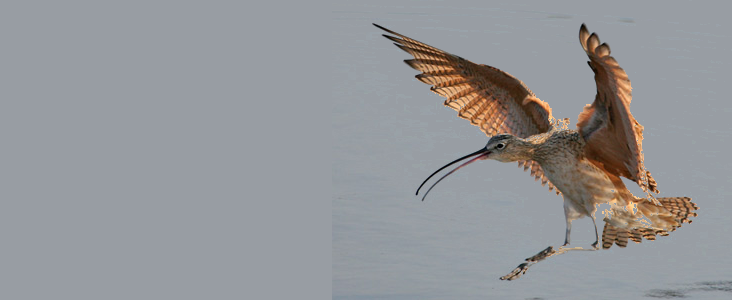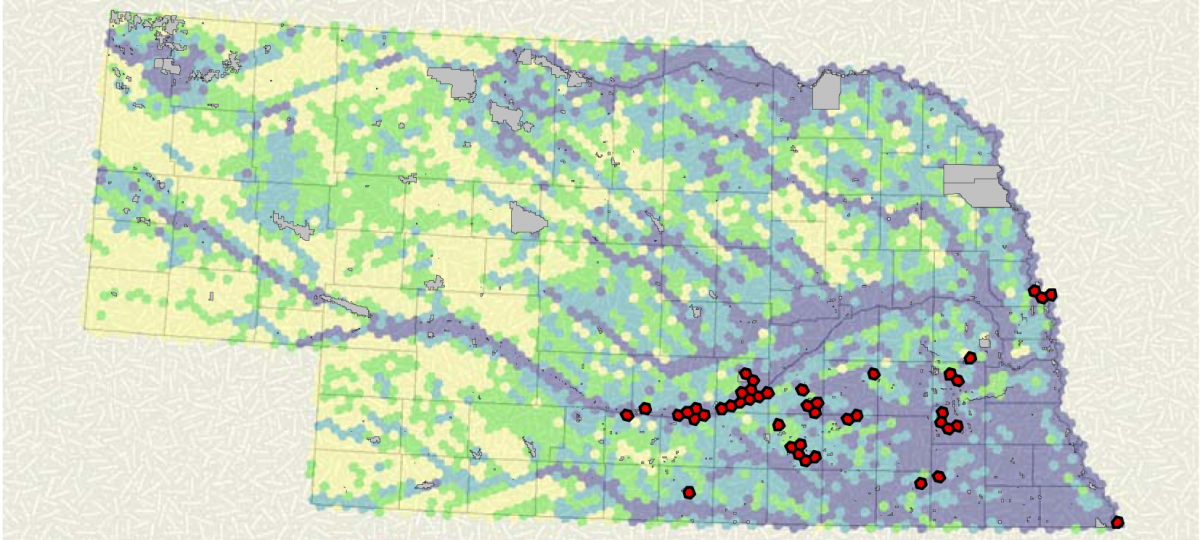Nebraska Gap
Analysis

Though several endangered terrestrial vertebrate species (see table below), including the critically endangered Eskimo Curlew pictured above, are found in Nebraska, little public protection exists for these animals and their critical habitat. Endangered fishes such as the Pallid Sturgeon, resident in Nebraska waterways, are not even taken into consideration in this study, though 37% of freshwater fishes are considered to be at risk of extinction. Fewer than 2% of lands are publicly owned and receive any conservation protections whatsoever. Specifically, 0.2% of Nebraska lands are permanently protected from conversion of natural land cover and allowed to experience natural disturbance (Status 1), 0.4% are protected from conversion from their natural state, but may be degraded by use or management practices (Status 2), and 1.3% are protected from conversion of natural land cover for the majority of the area, but are subject to extractive uses (Status 3).
Given such a small percentage of public lands in Nebraska, few conservation opportunities exist when efforts are limited to public lands. Conservation of Nebraska's biodiversity will require more public and independent participation in conservation planning and programs for biodiversity protection, enhancement, and management. It would be imprudent to infer that a lack of formal protective status indicates poor management of the lands in private hands, and this study indicates how strongly stewardship of Nebraska's biodiversity depends on public-private partnerships.

Red dots indicate species-rich hexagons (40 km2) on publicly-owned lands with conservation protections (Status 1 & 2 lands).
Nebraska threatened and endangered vertebrate species:
| Common name | Scientific name | State status | Federal status | Modeled habitat (km2) | % modeled area in status 1 & 2 |
| Eskimo Curlew | Numenius borealis | Endangered | Endangered | Not modeled | Not modeled |
| Whooping Crane | Grus americana | Endangered | Endangered | Not modeled | Not modeled |
| Interior Least Tern | Sterna antillarum athalassos | Endangered | Endangered | 13,947.8 | 1.1% |
| Bald Eagle | Haliaeetus leucophalus | Threatened | Threatened | 28,868.9 | 0.5% |
| Piping Plover | Charadrius melodus | Threatened | Threatened | 13,947.8 | 1.1% |
| Mountain Plover | Charadrius montanus | Threatened | Candidate | 2,189.5 | 0% |
| Mammals | |||||
| Black-footed Ferret | Mustela nigripes | Extirpated | Not listed | Not modeled | Not modeled |
| Southern Flying Squirrel | Glaucomys volans | Threatened | Not listed | Not modeled | Not modeled |
| River Otter | Lutra canadensis | Threatened | Not listed | 4,379.0 | 0.80% |
| Reptiles & Amphibians | |||||
| Massasauga | Sistrurs catenatus | Threatened | Threatened | 4,379.0 | 0.1% |
Status definitions:
Status 1: An area having permanent protection from conversion of natural land cover and a mandated management plan in operation to maintain a natural state within which disturbance events (of natural type, frequency, and intensity) are allowed to proceed without interference or are mimicked through management.
Status 2: An area having permanent protection from conversion of natural land cover and a mandated management plan in operation to maintain a primarily natural state, but which may receive use or management practices that degrade the quality of existing natural communities.
Status 3: An area having permanent protection from conversion of natural land cover for the majority of the area, but subject to extractive uses of either a broad, low-intensity type or localized intense type. It also confers protection to federally listed endangered and threatened species throughout the area.
Status 4: Lack of irrevocable easement or mandate to prevent conversion of natural habitat types to anthropogenic habitat types. Allows for intensive use throughout the tract. Also includes those tracts for which the existence of such restrictions or sufficient information to establish a higher status is unknown.
Read the complete Nebraska Gap Final Report.
